Operating a concrete grinder in a commercial setting can be dangerous if you’re not aware of the potential risks or take the proper precautions. You should consistently follow best practices when using a concrete grinder to ensure your safety and that of those around you.
The purpose of this article is to provide some tips to help you use your concrete grinder in the safest manner possible.
How Are Concrete Grinders Used in Commercial Settings?
Concrete grinders are highly versatile machines commonly utilized in various commercial settings. They serve a multitude of purposes, including grinding down concrete surfaces, levelling uneven concrete, floor remodeling, and effectively removing paint or other coatings.
Moreover, these remarkable tools can also be employed to create stunning decorative designs on a concrete floor, which makes them an indispensable asset for a wide range of applications.
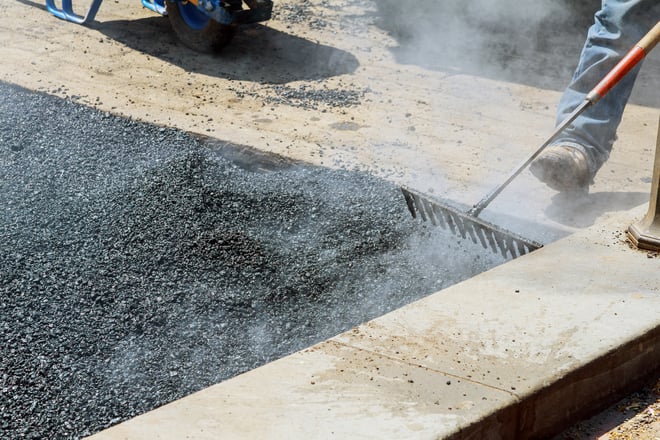
Potential Safety Hazards
When operating a concrete grinder in a commercial setting, it is important to be aware of the potential occupational safety hazards associated with the machine.
The following list outlines some of the most common risks:
Flying Particles and Dust
The spinning blades of a powerful concrete grinder can send small pieces of material flying at high speeds, posing a significant danger to both the operator and anyone in the immediate vicinity. In addition to the physical risks, the dust generated during the concrete grinding process can lead to respiratory problems and eye irritation if not properly managed with a dust collector.
What Kind of Dust Is Created by Concrete Grinding?
The dust created by a concrete grinder grinding wheel is composed primarily of silica. When inhaled, silica dust can cause considerable damage to the respiratory system.
Silica dust particles are small enough to pass through the alveoli in the lungs and be absorbed into the surrounding tissue. This absorption can cause scarring and inflammation, leading to a variety of illnesses such as lung cancer, silicosis, bronchitis, and asthma.
By putting on a dust mask and safety goggles before you begin grinding, you can easily reduce the risk to your respiratory system and overall health.
Flying Sparks
When concrete grinders are used, they generate heat due to the friction involved in the grinding process. This heat can sometimes result in the formation of sparks, particularly if you are operating at a high speed.
It is crucial to handle these sparks with utmost care, as they have the potential to cause burns and even ignite fires if not properly managed.
Slips, Trips, and Falls
When operating a concrete grinder, it is crucial to be constantly vigilant and aware of potential slips, trips, and falls that can result from wet floors or tangled extension cords.
Another culprit for these types of accidents is improper balance. The spinning blades of the machine, while effective, can also generate subtle vibrations that could disrupt the operator's balance and stability.
Electrical Hazards
When operating a concrete grinder, it is crucial to ensure that the spinning blades don’t come into contact with any electrical hazards. Contact with electrical hazards can result in severe injuries or even fatal accidents.
To further ensure safety, it is important that you meticulously follow the manufacturer's instructions when connecting the machine to a power source.
High Noise Levels
Concrete grinders can be loud. With that being said, it is important to wear hearing protection when operating the machine while simultaneously ensuring that those in close vicinity of floor grinders are also protected from any potential noise exposure.
Prolonged exposure to high noise levels can lead to permanent hearing loss. This is because the intense sound waves emitted from a concrete grinder damage the delicate structures of the inner ear. Over time, this damage builds up and gradually diminishes your sense of hearing.
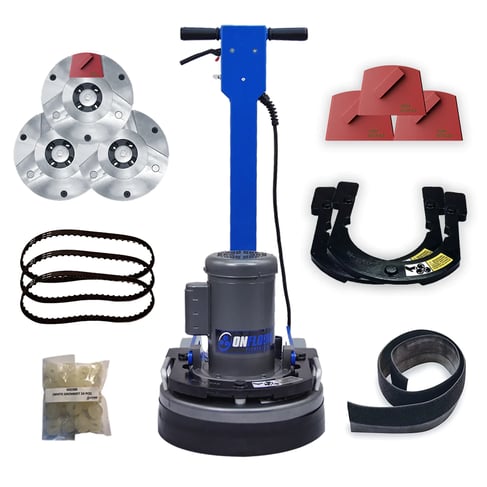
How Can You Reduce These Safety Hazards?
When operating a concrete grinder in a commercial setting, it is important to take the following safety precautions to ensure peak concrete grinder safety:
Wear Appropriate PPE
You must wear safety goggles and other appropriate Personal Protective Equipment (PPE) when using a concrete grinder. Aside from safety glasses and eye protection, this includes the correct personal protective equipment clothing, respiratory protection, and hearing protection.
Additionally, if you are using a corded version of the machine, then it is important to wear insulated gloves to prevent electric shocks in case of contact with any electrical hazards.
Ensure the Area Is Ventilated
When operating a concrete grinder, you must ensure that the area where you are working has adequate ventilation. This will help to reduce the risk of respiratory problems caused by dust particles.
Keep Your Hands Away from the Grinding Disc
It is important to always keep your hands away from the surface of the grinding disc when operating a concrete grinder. This is because there is a risk of them getting caught in the spinning blades, which can lead to serious injuries.
You should also be mindful of any dangling items (such as jewelry, clothing, or long hair) that could get caught in the spinning blades and cause injury.
Maintain a Clean Working Environment
When using a concrete grinder, it is important to maintain a clean and organized working environment. This means keeping any concrete floors free of debris and clutter, as they can become projectiles when the machine is in operation.
Furthermore, you should also keep any extension cords away from the path of the grinder’s spinning blades to avoid any potential accidents.
Use The Right Tool for the Job
It is important to use the right tool for the job application. Make sure that you are using a cutting tool or a concrete grinder that is suited to the task at hand and is in good working condition.
If you are using the wrong type of concrete grinder, you run the risk of it not being able to handle the task at hand, which can lead to potential damage and injury.
Follow the Manufacturer's Instructions
Make sure to read and follow all manufacturer’s instructions when operating a concrete grinder. The relevant user manual should include emergency procedures, effective troubleshooting, and how to safely connect your concrete grinder to an appropriate power source.
Ensure Workers Have Been Properly Trained
Finally, all workers must be properly trained in the use and maintenance of concrete grinders. Workers should be familiar with the potential hazards associated with the machine and understand the safety precautions they need to take when using it.
Additionally, they should understand how to inspect the machine before operation and know how to identify any potential problems.
Maintenance of Concrete Grinders
To ensure the safety of those operating a concrete grinder in a commercial setting, the necessary precautions, as well as regular maintenance and inspection, must be carried out.
These include:
Properly Storing Grinding Tools When Not in Use
When your tools are not in use, you should store your company’s concrete grinders in a safe and secure location. On top of that, blades and other cutting tools should be stored separately from the grinding machine itself to avoid potential accidents.
By not storing your grinder properly after each use, you run the risk of allowing dirt to build up on the blades and other components. This can lead to malfunctioning or unexpected grinding during use.
Inspecting Your Machine Before Use
Before operating a concrete grinder in a commercial setting, you should inspect your machine for any signs of wear and tear. This includes checking all safety guards, power cords, and connectors to make sure they are in good working condition.
By quickly inspecting a machine before use, you can save yourself an immense amount of trouble and potential injury later on.
Cleaning Your Machine After Each Use
It is important to clean the machine after each use, as this will help prevent any build-up of dust and material that may impede its operation or cause accidents.
Make sure to wipe down all surfaces with a damp cloth and remove any debris from blades or other components. Additionally, it is important to lubricate any moving parts to keep them operating smoothly.
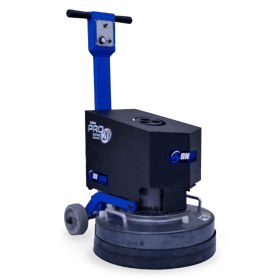
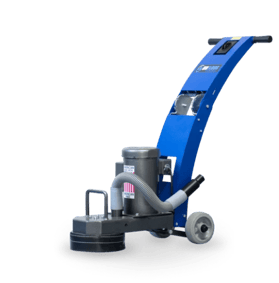
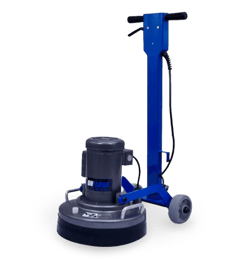
Regular Servicing
Regular servicing is another important part of ensuring the safety of those operating a concrete grinder in a commercial setting. This includes checking all bolts, nuts, and belts for any signs of wear and tear.
We recommend that you have your grinder serviced at least once a year. This helps to ensure that the machine continues to operate safely and efficiently. Additionally, it can help to identify any potential problems before they become more serious.
Conclusion
Concrete grinders are useful and versatile tools that can help to make any job easier. However, it is essential to understand the potential hazards associated with them so that you can keep both yourself and your workers safe when operating a concrete grinder in a commercial setting.
By following the safety tips outlined in this article, you can help reduce the risks of injury or damage to anyone operating a concrete grinder. Always remember that safety should always be your priority when it comes to using any type of machinery in the workplace!
0 comments